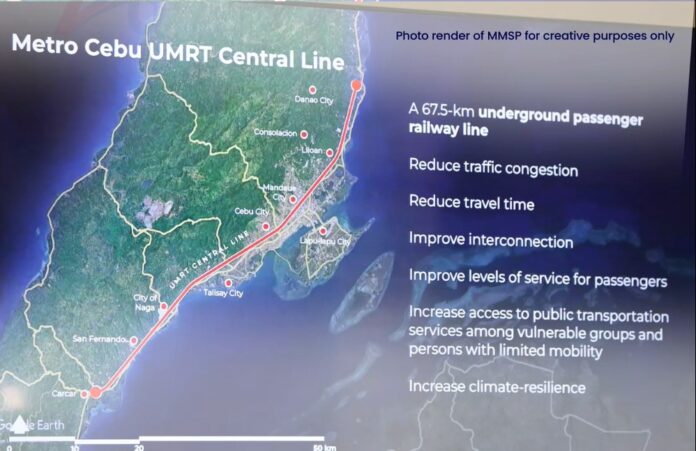The Department of Transportation (DOTr) has set its sights on transforming Cebu’s transport landscape with an ambitious plan to construct an underground railway system, aimed at easing the province’s notorious traffic congestion. This project, touted as a critical solution for both mobility and economic growth, is poised to reshape how residents and visitors navigate one of the Philippines’ most rapidly developing regions.
In a statement issued Thursday, transportation undersecretary Timothy John Batan revealed that discussions with Cebu governor Gwendolyn Garcia and provincial officials had already commenced, with the goal of launching construction as early as 2024. “This project is part of a broader masterplan for Cebu to decongest its roads and promote the use of public transportation,” Batan explained during an interview on DOTr’s Sakay Na! radio program.
Cebu Province, with its limited road space and densely populated urban areas, faces unique challenges when it comes to infrastructure development. Unlike Metro Manila, where elevated rail lines have become a staple of the city’s transport system, Cebu’s narrow streets make such projects infeasible. Batan pointed out that the proposed subway system, which is part of the broader masterplan for Cebu, would avoid the issues of space constraints, offering a more sustainable and efficient solution.
The subway is expected to cover an extensive 60 to 65 kilometers of rail lines, stretching from Danao City in the north to Carcar City in the south. While the specifics are still under study, this project promises to significantly reduce travel time across the province and improve connectivity between its major cities and municipalities.
The economic implications of the Cebu Subway project are far-reaching. Once completed, the subway system is not just a transportation project but a potential catalyst for economic development. By enhancing access to key business districts and improving the flow of goods and services, it will contribute to Cebu’s competitiveness as a hub for investment and tourism. Furthermore, the availability of efficient public transport is expected to encourage the growth of new businesses, particularly in areas near subway stations.
The transport agency plans to conduct a ridership study to assess the demand for the subway system. Batan emphasized that the involvement of the provincial government would ensure that the project meets the needs of Cebuanos and aligns with the region’s long-term development goals.
As Cebu continues to experience rapid urbanization, the introduction of a modern, efficient, and sustainable public transport system like the Cebu Subway could have a profound impact on the province’s economy and quality of life. By alleviating congestion, boosting productivity, and encouraging sustainable growth, this project stands to become a cornerstone of Cebu’s economic future.







